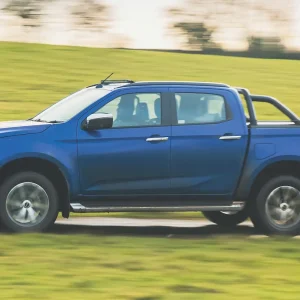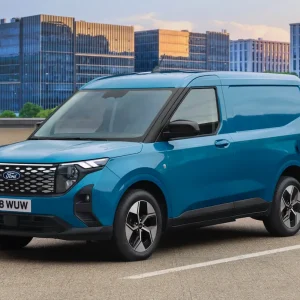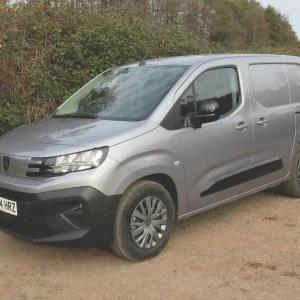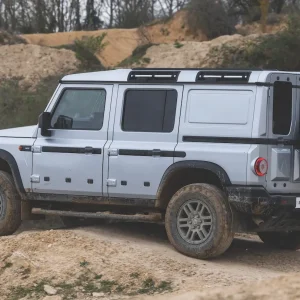Based on the long-wheelbase standard roof version of the soon-to-be-launched revised Vito, E-CELL has a range of around 80 miles, a top speed of 50mph and is fitted with lithium-ion batteries.
Mounted beneath the cargo bed — the front-wheel drive system installed that makes this possible was developed specifically for E-CELL — they take around six hours to recharge from a three-phase supply. The charging point is behind the flap that would otherwise conceal the van’s fuel filler pipe.
They can also be charged from a domestic power socket — the charger can be set to operate solely when cheap off-peak power is available — and the energy generated when the driver hits the brakes helps to keep them topped up.
The batteries power an electric motor with a continuous output of 60kW, a peak output of 70kW and top torque of 280Nm. It’s married to a single-speed transmission.
At around 900kg, the 3,050kg gross E-CELL offers a respectable payload capacity and the positioning of the batteries means that the entire load area can be used for cargo. 
They’re water-cooled at present, but Mercedes hopes to switch to air-cooling instead. Doing so will boost the payload capacity by 60kg.
Electric vans are significantly more expensive than their conventionally-powered counterparts and the zero-tailpipe-emission E-CELL is predicted to come in at around 1.4 times to twice the price of a diesel Vito.
Remember, however, that it will be zero-rated so far as Vehicle Excise Duty is concerned and will not be subject to the London congestion tax. What’s more, the power to propel an electric van for a mile costs only a few pence although that has to be balanced against the cost of eventually replacing the battery pack.
On the Road
So what’s it like to drive? We headed off to Merc’s German HQ in Stuttgart to find out.
Climb behind the wheel, turn the ignition key, slot the lever on the dashboard into ‘D’ for Drive and move away, and you hear nothing other than the slap of the tyres on tarmac and a modest amount of wind noise. 
E-CELL is eerily quiet; so much so that some sort of acoustic signal may be needed to warn pedestrians and cyclists of its presence.
Once you’ve got use to the lack of decibels, you can concentrate on enjoying the performance.
Forget about the sluggish milk-floats that you still see trundling along British streets. Vito E-CELL accelerates strongly — an electric motor’s peak torque is available immediately — allowing you to nip through any gaps in the traffic with ease.
It rides and handles well too, making it more than capable of coping with the cut and thrust of the urban driving jungle. Biddable at low speeds, it does not shoot forwards or backwards suddenly when you’re trying to manoeuvre it into a parking space.
When you take into account the well-laid-out cab and the rock-solid build quality, we reckon it’s the best-designed and most-practical electric van we’ve ever encountered. The entire propulsion system has been seamlessly integrated into the vehicle; something that few of Mercedes-Benz’s competitors in this sector of the market have managed to accomplish.
The initial 100 E-CELLs to be built will be rented to a dozen or so major fleets in Germany and Spain under a four-year/approximately 50,000 miles agreement. Maintenance will be included in the rental deal and the vans will be returned to Mercedes when it expires.
The manufacturer is hoping to learn a considerable amount about the practical aspects of running electric light commercials in what will amount to an extended customer trial. Various aspects of the E-CELL project are receiving support from the public purse in both Spain and Germany.
Verdict
If you’re on short-range city centre delivery work then Mercedes-Benz E-CELL is worth considering, despite the price premium and the restrictions battery power imposes on operational flexibility. It’s a practical working tool, no question about it, and provides proof, it proof were needed, that the electric van has come of age.






